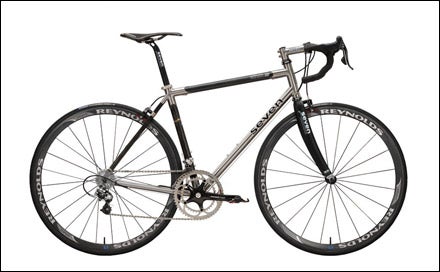Eating for basic health and fitness is simple. Seriously, people. Just cook with a high variety of whole foods, emphasis on grains and produce. And eat five perfectly planned small meals a day—not three. Oh, and try to memorize the glycemic index of every enticing product in the grocery store. Even better, hire a personal shopper and a live-in chef … Not the world you’re living in? Here’s another way to simplify: Read our comprehensive guide to performance nutrition and follow the straightforward rules. We guarantee you’ll feel—and play—better. Or we’ll eat our words.
Guts, at Work
Understand how your digestive system turns food into fuel and you’ve taken the first step toward smart eating. The process starts with simply chewing well, which adds saliva (1) and breaks food down for easier digestion. When you swallow, food travels down the esophagus (2) and into the stomach (3). There, acid and enzymes convert food into a paste-like mix, while the pyloric valve (4) prevents this acidic brew from backing up. Digested food leaves your stomach in one to four hours. Carbohydrates go first, followed by protein, then fat. These macronutrients enter the duodenum (5), the first section of your small intestine (6). Enzymes stored in the duodenum, and those supplied by the pancreas (7), complete most of the digestion process.
Power Supply
Think of your body as a house equipped with electricity, gas, and solar: different power sources for different purposes. The fuel you tap for exercise depends on the intensity and duration of your workout.
ENERGY SYSTEM: Aerobic
USED FOR: Steady burning of fuel for any moderately paced, sustained cardio training (running, cycling, swimming, etc.)
HOW IT WORKS: For longer efforts, this system provides a sustainable supply of adenosine triphoshate (ATP), the molecule that causes contractions in your muscles. For the first 15 to 30 minutes, fuel comes mainly from glycogen stored in your muscles. Muscle fat contributes more fuel for up to 90 minutes, and after that, adipose fat (the jiggly kind) is burned as well. You have about 1,400 calories’ worth of stored glycogen in your muscles and another 400 in your liver—enough for a 1.5-hour run.
ENERGY SYSTEM: Anaerobic glycolysis
USED FOR: Sustained speed for high-paced efforts, extended resistance training, intervals
HOW IT WORKS: This system kicks in when you’re out of breath but still moving fast. It produces ATP at a high rate for about two minutes, using a combination of creatine phosphate (a naturally occurring compound chemical stored in muscles) and muscle glycogen. Lactic acid is a by-product.
ENERGY SYSTEM: Creatine phosphate
USED FOR: Explosive energy required for resistance training and repeated sprints
HOW IT WORKS: This system rapidly produces ATP from creatine phosphate. It yields about six to eight seconds of fuel for explosive efforts. You can take creatine supplements to bolster the system, but it helps you do only a few extra reps during power building or gives you an additional boost for repeated sprints.
Five Habits of Highly Successful Eaters
(1) EAT A GOOD BREAKFAST.
It jump-starts your metabolism, provides energy for mid-morning workouts, and keeps you from losing steam before lunch.
(2) SNACK OFTEN.
Skipping meals, or waiting more than five hours between them, can slow your metabolism, cause energy dips, and lead to overeating. Bring fresh fruit and vegetables to work so you never resort to the candy machine.
(3) PLAN AHEAD.
Look at your schedule for the coming week, plan meals, and allow time for grocery shopping. You make time for working out; you should do the same for cooking healthy food.
(4) BE RESTAURANT SAVVY.
It’s fine to eat out; just don’t treat it like a nutritional vacation. Avoid supersize portions, ask about ingredients, and make smart substitutions (like a baked potato instead of fries).
(5) GET EIGHT HOURS OF SLEEP.
Inadequate rest alters levels of appetite-regulating hormones, leading to increased appetite (but not increased activity).
Legal Aid
Lab Rat

On the label of 5-Hour Energy—a fatigue-fighting drink that claims to be a healthy alternative to sugar bombs like Red Bull, Monster, and venti Frappuccinos—a silhouetted runner bounds up a mountain at sunset. I received the sample, which comes in a two-ounce plastic bottle, after spending a deskbound summer under a brutal book-project deadline. I looked wistfully at the image of the runner. When was the last time I’d felt like that? I read the label. FOR MODERATE ENERGY: DRINK A HALF BOTTLE OR LESS … FOR MAXIMUM ENERGY: DRINK ENTIRE BOTTLE AT ONE TIME.
I tend to be skeptical of such products, but suddenly I found myself tearing off the cap and gulping the contents, the ultra-tart liquid making a little glick-glick-glick sound as it emptied into my mouth. It was around 2 p.m., and that afternoon I finished writing a book chapter, did three loads of laundry, cleaned and organized my office, and took my dog out for an hourlong trail run. Shazam—I was that guy on the bottle!
The boost behind the juice comes from large doses of B vitamins and a proprietary energy blend that includes, among other things, caffeine, taurine, and phenylalanine. I tried 5-Hour again the next day, with similar results; I even scored the winning goal in my weekly soccer game.
I was so amazed by the jolt that I called up sports dietitian Dave Ellis, who works with pros from the NFL and NBA. He hadn’t tried 5-Hour, but he wasn’t impressed. “You build a tolerance to these stimulants, and when you can’t feel one, you go to two; when you can’t feel two, you go to three,” he said. “That creates a cycle of codependence.”
Living Essentials, the maker of 5-Hour, claims it’s not just the caffeine but the large hit of B vitamins that provides the punch. Each shot contains 40 milligrams of vitamin B6 and 500 micrograms of B12—respectively, 2,000 and 8,333 percent of the recommended daily allowances. It’s long been known that B vitamins aid the metabolism and sharpen mental acuity; my grandfather, a physician, used to give my grandmother B12 shots to crank up her energy. “The problem is, we don’t know what happens over time when you isolate nutrients,” Ellis said. “The combination of nutrients in real food offers benefits that we’re just beginning to discover.”
I tried 5-Hour for a couple of weeks, in various circumstances, and, sure enough, I soon started craving a double dose. Hmmm. I was on a slippery slope when what I really wanted was to be back on the trail.
This Just In
News from the nutrition frontier
Sharp Idea
Feel more at home on a bike than in the kitchen? Bike-grip handles and superior handmade blades make MKS Design’s high-concept knives the choice. From $150;COFFEE: Stop feeling guilty about your java cravings. First, it’s a myth that a moderate amount of caffeine causes dehydration during exercise. Coffee contains heart-healthy soluble fiber—known to reduce cholesterol levels—according to a study published in the Journal of Agricultural and Food Chemistry. Another study, in the American Journal of Clinical Nutrition, suggests that drinking two to three cups of coffee daily lowers the risk of developing cardiovascular disease. Coffee is also a good source of antioxidants, including cancer-fighting polyphenols.
VITAMIN D: Don’t go light on this critical vitamin. Not only is D essential to bone health; it may also help prevent certain cancers and autoimmune diseases. Researchers from the Harvard School of Public Health found that higher vitamin D levels are associated with a lower risk of developing multiple sclerosis. Most people naturally get 200 to 400 IU daily, but experts now recommend 800 IU each day from food and supplements combined. Get yours from a daily multivitamin. We like Centrum Silver Tablets, which have 500 IU of vitamin D (ignore the marketing message for “older” adults).
SNACKS: Munching small portions evenly throughout the day—rather than overeating at meal times—is good for your waistline and your job. A study in the journal Medicine & Science in Sports & Exercise found that firefighters who split their usual meals into regular snacks had significant increases in productivity, especially during the latter hours of the day.
Express Train
Trying to build muscle this winter? Eat meat.
BY CHRIS CARMICHAEL
Nothing against vegetarians, but when my athletes are training hard, I recommend that they eat red meat. Lean cuts of beef (sirloin, tenderloin, top round), bison, and lamb are reasonably low-fat sources of high-end protein and zinc. But the real advantage over protein powders or tofu is the iron. Heme iron, the type found in meat, is more efficiently absorbed by the body than the non-heme iron found in vegetables. Why does that matter? New evidence, reported in Medicine & Science in Sports & Exercise, suggests that athletes turn over their oxygen-carrying red blood cells faster than other people; replacing those cells requires a healthy dose of iron. Male athletes should consume just a bit more than the RDA, or 8–14 milligrams from food daily. A six-ounce steak has 4 milligrams, so fire up the grill.
Chris Carmichael is the founder of Carmichael Training Systems and former coach to Lance Armstrong.
Energizers
Get the right mix of highs and lows by understanding the glycemic index

You know that carbo-loading preps your body for a big effort by topping off glycogen stores in your muscles and liver. But not all pasta parties are equal. Some carbs (like white pasta) hit your system hard, giving you a quick boost but dropping off abruptly, while others (like whole-grain pasta) are processed slowly, supplying sustained energy. This difference in the blood-sugar spike is called the glycemic index (GI) or glycemic load (GL). (You’ll see both terms in the marketplace.) High-glycemic foods are particularly helpful for training and recovery eating, when you need to replenish glycogen quickly. For routine meals and snacks, however, round out your diet with foods lower on the glycemic scale. The most important thing is simply to remember that athletes need a mix of low-, moderate-, and high-glycemic carbs in their daily diet. Use the following guide.
Glycemic Index: Low = less than 55; moderate = 55–70; high = more than 70
Glycemic Load: Low = less than 10; moderate = 11–19; high = more than 20
Here are GL figures for some common foods. Get more at .
HIGH
Baked potato
Serving size: 7.1 oz; Total carbs: 29 g; GL: 27.3
Spaghetti (white)
Serving size: 6.4 oz; Total carbs: 44.3 g; GL: 25.7
Bagel (white)
Serving size: 2.5 oz; Total carbs: 35.5 g; GL: 25.6
Pancakes
Serving size: 2.8 oz; Total carbs: 32.5 g; GL: 21.8
MODERATE
Muesli
Serving size: 1.8 oz; Total carbs: 30.2 g; GL: 18
Spaghetti (whole-grain)
Serving size: 6.4 oz; Total carbs: 44.3 g; GL: 14.2
Sweet potato
Serving size: 5.3 oz; Total carbs: 26 g; GL: 12.5
Banana
Serving size: 4.2 oz; Total carbs: 23.9 g; GL: 12.2
Orange juice
Serving size: 9.3 oz; Total carbs: 21.1 g; GL: 12
LOW
Apple
Serving size: 4.2 oz; Total carbs: 14.6 g; GL: 5.9
Lentils
Serving size: 5.3 oz; Total carbs: 14.9 g; GL: 4.2
Fuel Your Sport
Boost performance with the right meal plan for every race.

Runners
PRE-RUN:
About three hours before the start, drink lots of liquids (water, juice, sports drinks) and eat an easily digested carbohydrate snack (jam-covered bagel).
RUN:
For runs longer than one hour, sip a sugary sports drink with plenty of sodium and two to three sources of carbohydrates. If needed, down a gel for a carb boost.
POST-RUN:
Immediately after the finish, down a high-carb recovery drink that contains a modest amount of protein and sodium.
Cyclists and Mountain Bikers
PRE-RIDE:
Cycling is forgiving on the stomach, so have a substantial high-carb snack two to four hours before the ride. A 165-pound man should aim for 150 grams of carbs (about what you’d find in a meal consisting of one cup of cereal, eight ounces of yogurt, one large banana, two tablespoons of raisins, two tablespoons of honey, and 12 ounces of juice).
RIDE:
Hydrating and fueling during your workout is simpler than with other sports. Aim to consume four to eight ounces of liquid every 15 to 20 minutes, and down a gel as needed. Roadies, set your heart-rate monitor as a reminder.
POST-RIDE:
Get high-GL carbs (cereals and breads) into your system within 30 minutes. Aim for half a gram of carbohydrate per pound of weight, and 15 grams of protein, with some sodium. A bowl of cereal with milk and fruit does the trick.
Triathletes
PRE-RACE:
For early start times, finish carbo-loading by 5 p.m. the day before, so you wake up hungry for your early pre-race meal (three hours before the start). In the morning, replenish liver glycogen with easily digestible carbs like bread and fruit.
RACE:
Make sure you have a proven plan for refueling with drinks, gels, and bars. Don’t forget: You’re sweating during the swim, so start drinking as soon as you get on the bike.
POST-RACE:
You’ll need plenty of carbs for glycogen replacement, as well as protein for muscle repair.
Winter Training
PRE-TRAINING:
Have hot cereal with milk, raisins, and juice before a cold day out on the snow or slopes. Add peanut butter for protein.
TRAINING:
Warm your beverage and use an insulated hydration system. Store energy bars and gels close to your body so they don’t freeze.
POST-TRAINING:
Hot chocolate, thank God, makes a great recovery drink. Have it with a high-GL snack, like a baked potato, to quickly replenish fuel and help you warm up.
Starter Course
This menu provides a day's worth of balanced nutrition for a 160-pound man who exercises an hour daily. Total calories: 2,400
(58% CARBS, 25% FAT, 17% PROTEIN)
BREAKFAST
– 1 cup cooked oatmeal with 1 tbsp honey and 7 walnuts
– 1 hard-boiled egg
– Grape juice (4 oz)
– Yogurt (8 oz)
SNACKS
(split between morning and afternoon)
– 1 peach
– 1 apple
– 1 granola bar
– 12 almonds
LUNCH
– Whole-wheat tortilla
– Chicken (3 oz)
– Pinto beans (1/2 cup, cooked)
– Rice (1/2 cup, cooked)
– low-fat cheese (1 oz)
– Avocado (two slices)
– Salsa (4 tbsp)
DINNER
– Whole-wheat pasta (2 cups, cooked)
– Marinara sauce (1 cup)
– Mixed salad greens (2 cups)
– Light salad dressing (2 tbsp)
DESSERT
– Frozen yogurt (4 oz)
– Blueberries (1 cup)
The numbers:
Carbs: 350 g
Protein: 106 g
Fat: 69 g
Calcium: 1,000 mg
Fiber: 40 g
Vitamin C: 120 mg
TIME TO EAT
As an athlete, you should schedule your meals and snacks around the day’s workout. Here’s a guide for morning, noon, and evening training sessions.
WORKOUT: Morning
PROBLEM: You don’t want to eat much right before training. But with an empty stomach, you won’t have the fuel you need.
SOLUTION: Drink a glass of juice and eat a piece of toast with jam. Have a more substantial breakfast—like whole-grain cereal, fruit, and skim milk—after your workout.
WORKOUT: Noon
PROBLEM: You’re heading out just as your energy from breakfast is fading.
SOLUTION: Eat a balanced snack at mid-morning. Example: low-fat yogurt (6 ounces), a tablespoon of nuts, and fresh fruit, like an apple or banana.
WORKOUT: Evening
PROBLEM: With the chaos of afternoon deadlines and meetings, you haven’t eaten in five hours. You’re tempted by the candy machine, but a poor choice now can hurt you later.
SOLUTION: You need a quick hit of carbs but nothing too heavy. Eat a handful of high-glycemic pretzels on your way out the door.

